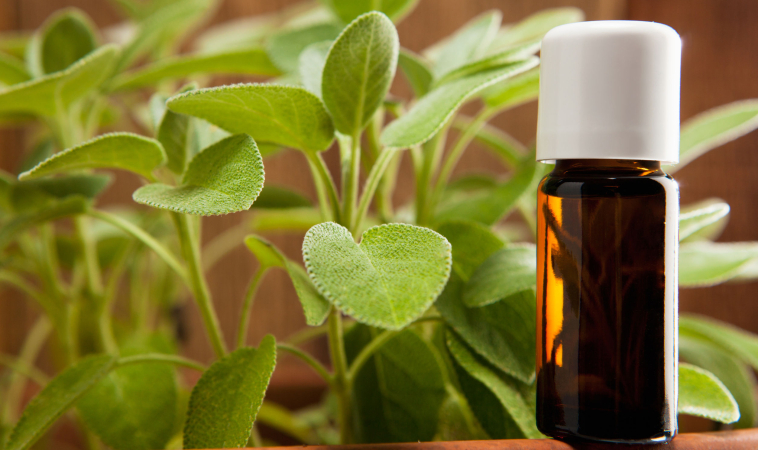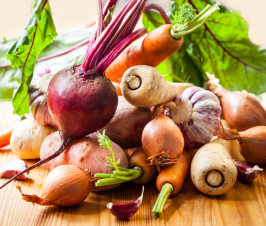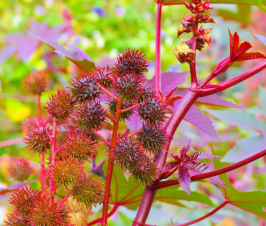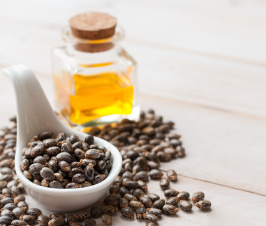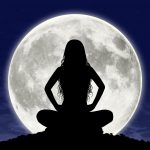In Part I (Examining the Hormonal Effects: Introduction Highlighting Sage), we learned that it was a big mistake to claim any action, especially “estrogenic” effects, of an essential oil based on one or two isolated compounds found in it. I reviewed why clary sage and fennel were not proven be estrogen-mimicking and why safety assessments based on a few of its constituents were also misleading.
The most recent highlighted essential oil in this series, sage oil, aims to untarnish the good name of essential oils for hormonal and whole-body health. In Part I, I gave specific examples of the synergism found within the essential oil itself that made the actions of one compound act differently in the presence of others. I also highlighted how petri dish studies and rodent studies will exhibit different effects. This is due to the fact that essential oils act differently in living organisms. Furthermore, in vitro experiments can compromise the integrity of scientific conclusions of essential oils due to the potential release of endocrine mimicking plasticizers released during the study.
 Another aspect to keep in mind is that animal studies cannot be extrapolated to form decisive conclusions on mechanistic actions of any compound for humans. This is due to their metabolic and biotransformation differences, among other factors. (source, source, source, source)1-4
Another aspect to keep in mind is that animal studies cannot be extrapolated to form decisive conclusions on mechanistic actions of any compound for humans. This is due to their metabolic and biotransformation differences, among other factors. (source, source, source, source)1-4
In fact, I gave a full-out estragole versus fennel rant that provided specific evidence that the metabolism of this compound differs in humans and rodents here.5-6
Therefore, when websites state estrogenic activity of essential oils, be cautious. Use that checklist with safety resources that I provided to empower you on deciding if a study is relevant to human beings.
Now, I will review the differences between an extract and essential oil. This is because sometimes the conclusions found in herbs and extracts are wrongly linked to essential oils. I will end this series on the few studies that support the “un-estrogenic” actions of sage oil.
Extracts Versus Oils
You hear the term “extract” often related to herbs, but what is it?
I found this explanation in Herbal Medicine:
Herbs and plants can be processed and can be taken in different ways and forms, and they include the whole herb, teas, syrup, essential oils, ointments, salves, rubs, capsules, and tablets that contain a ground or powdered form of a raw herb or its dried extract. Plants and herbs extracts vary in the solvent used for extraction, temperature, and extraction time, and include alcoholic extracts (tinctures), vinegars (acetic acid extracts), hot water extract (tisanes), long-term boiled extract, usually roots or bark (decoctions), and cold infusion of plants (macerates). There is no standardization, and components of an herbal extract or a product are likely to vary significantly between batches and producers.7
The author further clarifies how different compounds in plants are found in different methods of preparations and how they can be manipulated:
Plants are rich in a variety of compounds. Many are secondary metabolites and include aromatic substances, most of which are phenols or their oxygen-substituted derivatives such as tannins (Hartmann 2007; Jenke-Kodama, Müller, and Dittmann 2008). Many of these compounds have antioxidant properties (see Chapter 2 on antioxidants in herbs and spices). Ethnobotanicals are important for pharmacological research and drug development, not only when plant constituents are used directly as therapeutic agents, but also as starting materials for the synthesis of drugs or as models for pharmacologically active compounds (Li and Vederas 2009). About 200 years ago, the first pharmacologically active pure compound, morphine, was produced from opium extracted from seeds pods of the poppy Papaver somniferum. This discovery showed that drugs from plants can be purified and administered in precise dosages regardless of the source or age of the material (Rousseaux and Schachter 2003; Hartmann 2007). This approach was enhanced by the discovery of penicillin (Li and Vederas 2009). With this continued trend, products from plants and natural sources (such as fungi and marine microorganisms) or analogs inspired by them have contributed greatly to the commercial drug preparations today. (source)7
Note that with an “extract”, the whole herb is not in its whole, synergistic form and various methods are used to obtain its “active constituents.” The compounds that result will differ from the essential oil, which are produced by distillation.
Similar to studies on fennel extract’s actions providing inconclusive evidence of estrogenic activity in rodents8-10 and being associated with the essential oil, trial results with sage extract has wrongly been linked to sage essential oil and biases.
Petri Dishes and Sage Extract
In a review article on sage for dementia therapy, the authors reported on evidence that estrogenic activity of the extract was dose dependent. They also stated that an in vitro study found weak hormonal action with the essential oil. They concluded, to my delight, that further study was needed in rodents in order to assess if these interactions and effects are found in a living organism, due to the differences in metabolic processes:
The potential oestro-genic activity of the S. lavandulaefolia extracts, essential oil and constituents requires further investigation in an in vivo environment where metabolic processes and the effectiveness of a compound-receptor complex in producing a gene response may alter oestrogenic activity (Green et al., 1998). 11
Several other in vitro studies of the extract of sage demonstrated oxidative stress protection and tumor inhibition in human cells and breast cancer lines. 12-14 This would counter estrogen-growth activity concerns for hormonal cancers, in petri dishes.
Rodents and Sage Extract
One study claimed that sage extract was “estrogenic” based on findings of breast bud growth and decreased menstrual cycles in rats. These conclusions are unlikely to be easily correlated to human use and effects.
The researchers report: “Saliva officinalishydroalcoholic extract (SHE)-treated rats that were gavaged with 30mg/kg/body weight of sage extract for 30 days.”15
Most humans do not gavage (administer food or drugs by force, usually through a tube leading down the throat to the stomach) large amounts of extract in their bodies, at least I hope not!
Human Trials and Sage Oil
According to Natural Medicines, which is a comprehensive review database for practitioners:
Endocrine effects: In human research, sage had beneficial effects against menopausal symptoms (17177). Extracts of the leaves of sage and Medicago sativa (alfalfa), when used together, were found to eliminate hot flashes and night sweating in some women (72695). The sage extract induced a significant increase in prolactin and thyroid-stimulating hormone response to thyrotropin-releasing hormone. The use of sage and other plant compounds for menopausal symptoms has been reviewed by other authors (72767,72768,72769). According to secondary sources, some constituents of sage have antiestrogenic effects.16
As far as the essential oil, there was one petri dish study:
Estrogenic activity: Induction of beta-galactosidase activity in yeast cells, a measure of estrogenic activity, was found in sage essential oil (0.01mg/mL) and the monoterpenoid geraniol (0.1-2mM) (39572). 1,8-Cineole, alpha- and beta-pinene, and thujone did not exhibit estrogenic activity.16
I sought to find other studies with the essential oil and estrogen activities. I ran into PubMed walls of shame that included: (1) searching for results and not getting anywhere, (2) being teased anticipation only to find a page that displays with “0 results,” and/or (3) totally irrelevant findings.
Summary
Essential oils are truly synergistic and have not been found to manipulate pathways in the human body to produce an “estrogenic effect.” Rather, they may impact hormones due to their holistic actions on the body. In other words, they have a physiological, biochemical, and psychological action simultaneously. This can result in a harmonizing effect on the endocrine system, when quality essential oils are used properly and safely.
References:
- BMJ-British Medical Journal. Just How Useful Are Animal Studies To Human Health?. ScienceDaily. December 18, 2006. Available at: www.sciencedaily.com/releases/2006/12/061215090857.htm. Accessed May 6, 2018.
- PLOS. Human drug trials are compromised by poor reporting of animal research. ScienceDaily. April 5, 2008. Available at: www.sciencedaily.com/releases/2018/04/180405150030.htm. Accessed May 6, 2018.
- Perel P, Roberts I, Sena E, et al. Comparison of treatment effects between animal experiments and clinical trials: systematic review. BMJ : British Medical Journal. 2007;334(7586):197. doi:10.1136/bmj.39048.407928.BE.
- Bracken MB. Why animal studies are often poor predictors of human reactions to exposure. Journal of the Royal Society of Medicine. 2009;102(3):120-122. doi:10.1258/jrsm.2008.08k033.
- LoBisco, S. Wrapping Up the Happy Hormonal Effects of Clary Sage Essential Oil and Getting a Taste of Fennel Oil: This Weekend’s Oily Tips. BreakFree Medicine Website. April 13, 2018. Available at: http://dr-lobisco.com/fennel-and-clary-sage-oil-for-healthy-hormones-debunking-isolated-claims/
- LoBisco, S. The Science to Set the Saga Straight…Hormonal Effects and Essential Oils: An Introduction. Healing, Health, and Wellness for the Body, Mind, and Spirit with Dr. Sarah. April 3, 2018. Available at: https://www.saratoga.com/healing-health-wellness/2018/04/the-science-to-set-the-saga-straight-hormonal-effects-and-essential-oils-an-introduction/
- Wachtel-Galor S, Benzie IFF. Herbal Medicine: An Introduction to Its History, Usage, Regulation, Current Trends, and Research Needs. In: Benzie IFF, Wachtel-Galor S, editors. Herbal Medicine: Biomolecular and Clinical Aspects. 2nd edition. Boca Raton (FL): CRC Press/Taylor & Francis; 2011. Chapter 1. Available from: https://www.ncbi.nlm.nih.gov/books/NBK92773/
- LoBisco, S. A Review of the “Estrogenic” Essential Oils: Fennel Oil Part II. Healing, Health, & Wellness for the Body, Mind, and Spirit with Dr. Sarah. April 24, 2018. Available at: https://www.saratoga.com/healing-health-wellness/2018/04/a-review-of-the-estrogenic-essential-oils-fennel-oil-part-ii/
- Malini T, Vanithakumari G, Megala N, Anusya S, Devi K, Elango V. Effect of Foeniculum vulgare Mill. seed extract on the genital organs of male and female rats [abstract]. Indian J Physiol Pharmaco[online]l. 1985 Jan-Mar;29(1):21-6. Available at: https://www.ncbi.nlm.nih.gov/pmc/articles/PMC4137549/#B68
- Badgujar SB, Patel VV, Bandivdekar AH. Foeniculum vulgare Mill: A Review of Its Botany, Phytochemistry, Pharmacology, Contemporary Application, and Toxicology. BioMed Research International. 2014;2014:842674. doi:10.1155/2014/842674.
- Perry NSL, Bollen C, Perry EK, Ballard C. Review article: Salvia for dementia therapy: review of pharmacological activity and pilot tolerability clinical trial. Pharmacology, Biochemistry and Behavior. 2003; 75: 651–65. Available at: https://pdfs.semanticscholar.org/b784/173d4d3bcbc866aebbbdeb563393fdbec45e.pdf
- Yurtseven S, Çetin M, Şengül T, Sögüt, B. Effect of sage extract (Salvia officinalis) on growth performance, blood parameters, oxidative stress and DNA damage in partridges. South African Journal of Animal Science. 2008; 38(2), 145-152. Available at: http://www.scielo.org.za/scielo.php?script=sci_arttext&pid=S0375-15892008000200008&lng=en&tlng=en.
- Gibbs C, Almusallam O, Malone TE, Myles EL. Abstract 5558: Growth inhibitory effect of perganum, sage, and olive leaves plant extracts on breast and lung cancer cell lines. Cancer Res. August 2015; 75: 5558 (15 Supplement). DOI: 10.1158/1538-7445.AM2015-5558
- Garcia C, Menti C, Lambert APF, Barcellos T, et al. Pharmacological perspectives from Brazilian Salvia officinalis (Lamiaceae): antioxidant, and antitumor in mammalian cells. Anais da Academia Brasileira de Ciências. 2016; 88(1), 281-292.https://dx.doi.org/10.1590/0001-3765201520150344
- Monsfi, M., Azarbahram, Z., Abedian, M., Ashraf, M. (2015). Salvia officinalis induce alveolar bud growing in adults female rat mammary glands. Avicenna Journal of Phytomedicine, 5(6), 560-567. doi: 10.22038/ajp.2015.4638
- Natural Medicines Databse. Food, Herbs, Supplements: Sage. Available at: https://naturalmedicines.therapeuticresearch.com/databases/food,-herbs-supplements/professional.aspx?productid=504#mechanismOfAction
Image Copyright: <a href=’https://www.123rf.com/profile_steinerpicture’>steinerpicture / 123RF Stock Photo</a>
 Sarah Lobisco, ND, is a graduate of the University of Bridgeport’s College of Naturopathic Medicine (UBCNM). She is licensed in Vermont as a naturopathic doctor and holds a Bachelor of Psychology from State University of New York at Geneseo.
Sarah Lobisco, ND, is a graduate of the University of Bridgeport’s College of Naturopathic Medicine (UBCNM). She is licensed in Vermont as a naturopathic doctor and holds a Bachelor of Psychology from State University of New York at Geneseo.
Dr. LoBisco is a speaker on integrative health, has several publications, and has earned her certification in functional medicine. Dr. LoBisco currently incorporates her training as a naturopathic doctor and functional medicine practitioner through writing, researching, private practice, and through her independent contracting work for companies regarding supplements, nutraceuticals, essential oils, and medical foods.
Dr. LoBisco also enjoys continuing to educate and empower her readers through her blogs and social media. Her recent blog can be found at www.dr-lobisco.com.

